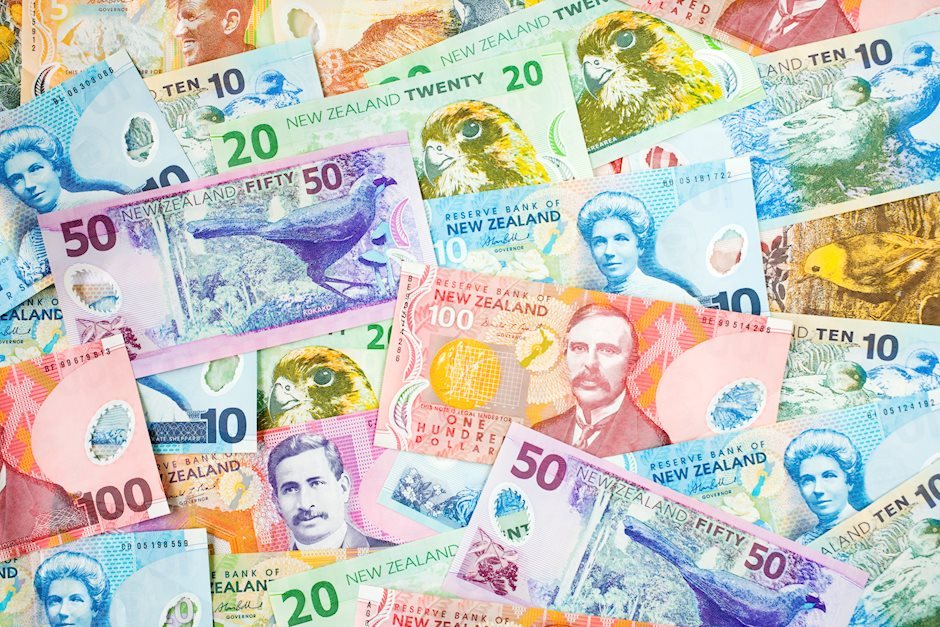NZD/USD slides to 0.6300 mark, downside seems cushioned ahead of US PCE Price Index
- NZD/USD drifts lower amid a modest USD uptick, though the downside seems limited.
- The optimism over additional stimulus from China should act as a tailwind for the Kiwi.
- Dovish Fed expectations to cap the USD and lend some support to the currency pair.

The NZD/USD pair attracts some sellers near the 0.6335 region during the Asian session on Friday and reverses a part of the previous day's strong move up. Spot prices currently trade around the 0.6300 mark, down 0.30% for the day, though remain within the striking distance of the year-to-date (YTD) peak touched earlier this week.
The US Dollar (USD) ticks higher in a familiar range amid some repositioning ahead of the crucial US inflation data and turns out to be a key factor exerting some downward pressure on the NZD/USD pair. The US Personal Consumption Expenditure (PCE) Price Index is due for release later today and will be looked upon for cues about the Federal Reserve's (Fed) rate-cut path. This, in turn, will play a key role in influencing the near-term USD price dynamics and provide some meaningful impetus to the currency pair.
Heading into the key data risk, bets for a more aggressive policy easing by the Fed might keep the buck confined in a familiar range held over the past two weeks or so and closer to the YTD low touched last week. In fact, the markets are currently pricing in over a 50% chance for another oversized interest rate cut at the next FOMC policy meeting in November. This overshadowed Thursday's better-than-expected US macro data, which, along with the upbeat market mood, should cap the upside for the safe-haven buck.
Investors continue to cheer a slew of stimulus measures announced by the People's Bank of China (PBOC) this week, including Friday's announcement to cut the seven-day repo rate to 1.5% from 1.7% and lower the Reserve Requirement Ratio (RRR) by 50 bps. Furthermore, the hopes that interest rate cuts will boost global economic activity continue to fuel the risk-on rally across the global equity markets. This, in turn, warrants some caution before positioning for any further intraday depreciating move for the NZD/USD pair.
New Zealand Dollar FAQs
The New Zealand Dollar (NZD), also known as the Kiwi, is a well-known traded currency among investors. Its value is broadly determined by the health of the New Zealand economy and the country’s central bank policy. Still, there are some unique particularities that also can make NZD move. The performance of the Chinese economy tends to move the Kiwi because China is New Zealand’s biggest trading partner. Bad news for the Chinese economy likely means less New Zealand exports to the country, hitting the economy and thus its currency. Another factor moving NZD is dairy prices as the dairy industry is New Zealand’s main export. High dairy prices boost export income, contributing positively to the economy and thus to the NZD.
The Reserve Bank of New Zealand (RBNZ) aims to achieve and maintain an inflation rate between 1% and 3% over the medium term, with a focus to keep it near the 2% mid-point. To this end, the bank sets an appropriate level of interest rates. When inflation is too high, the RBNZ will increase interest rates to cool the economy, but the move will also make bond yields higher, increasing investors’ appeal to invest in the country and thus boosting NZD. On the contrary, lower interest rates tend to weaken NZD. The so-called rate differential, or how rates in New Zealand are or are expected to be compared to the ones set by the US Federal Reserve, can also play a key role in moving the NZD/USD pair.
Macroeconomic data releases in New Zealand are key to assess the state of the economy and can impact the New Zealand Dollar’s (NZD) valuation. A strong economy, based on high economic growth, low unemployment and high confidence is good for NZD. High economic growth attracts foreign investment and may encourage the Reserve Bank of New Zealand to increase interest rates, if this economic strength comes together with elevated inflation. Conversely, if economic data is weak, NZD is likely to depreciate.
The New Zealand Dollar (NZD) tends to strengthen during risk-on periods, or when investors perceive that broader market risks are low and are optimistic about growth. This tends to lead to a more favorable outlook for commodities and so-called ‘commodity currencies’ such as the Kiwi. Conversely, NZD tends to weaken at times of market turbulence or economic uncertainty as investors tend to sell higher-risk assets and flee to the more-stable safe havens.
Author

Haresh Menghani
FXStreet
Haresh Menghani is a detail-oriented professional with 10+ years of extensive experience in analysing the global financial markets.

















